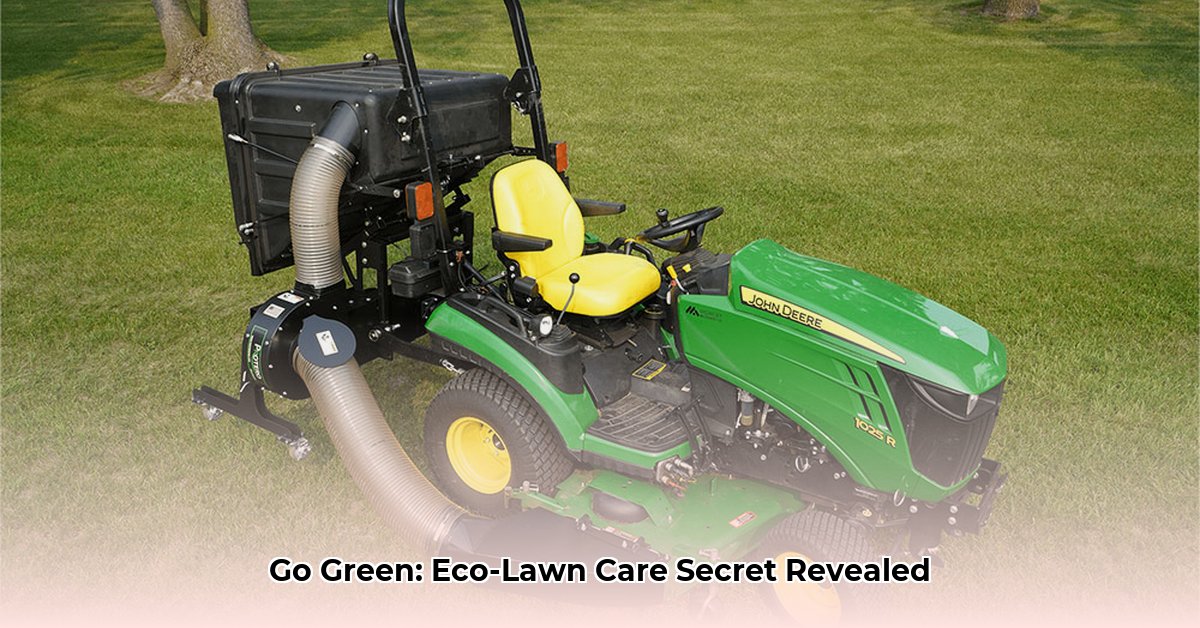
Tractor Grass Catcher: Your Guide to an Eco-Friendly Lawn
Mowing the lawn shouldn't feel like a chore. With a tractor grass catcher, it can become a step towards a healthier planet and a more vibrant yard. This isn't just about neatness; it's about sustainable lawn care practices. This guide helps you choose, use, and maintain a grass catcher, reaping eco-friendly rewards. For more information on specific models, check out this helpful resource on Cub Cadet baggers.
Why Bag Those Clippings? The Unexpected Perks of a Grass Catcher
Those grass clippings aren't just waste; they're a valuable resource! A tractor grass catcher collects this organic matter, transforming "trash" into treasure. This reduces reliance on chemical fertilizers, benefiting both your garden and the environment.
Here are the benefits:
- Effortless Cleanup: Say goodbye to raking! A grass catcher efficiently collects grass and debris.
- Composting Made Simple: Collected clippings become the basis for nutrient-rich compost.
- Environmentally Friendly: Minimize waste and reduce chemical fertilizer use, lessening your environmental footprint.
- A Healthier Lawn: Compost enriches the soil, supporting strong, healthy grass that's resistant to pests and diseases. Isn't a self-sustaining lawn a gardener's dream?
Picking the Perfect Tractor Grass Catcher: A Buyer's Guide
Choosing a grass catcher requires some thought. Here's what to consider:
- Compatibility: Ensure the catcher fits your tractor model. Check manufacturer specifications carefully; an incompatible catcher can damage your equipment.
- Capacity: Consider your lawn size. A smaller catcher requires more frequent emptying. Larger lawns need a higher capacity to maintain efficiency.
- Durability: Invest in a sturdy, long-lasting model. Durable materials and robust construction are essential for frequent use.
- Ease of Use: Look for features that simplify emptying and attachment. User-friendly designs enhance the overall experience.
- Budget: Grass catchers exist at varying price points. Consider long-term value; a higher-quality catcher may be a better investment.
Turning Grass Clippings into Garden Gold: A Simple Composting Guide
Composting grass clippings is straightforward and incredibly rewarding. Here's how:
- Gather Supplies: You'll need your grass clippings, other organic materials (dried leaves, twigs), and a compost bin.
- Layer Wisely: Alternate "green" (grass, vegetable scraps) and "brown" (leaves, twigs, shredded paper) materials for proper decomposition.
- Moisture Management: Keep the compost moist but not waterlogged. Aim for a damp sponge consistency. Regular watering is key.
- Aerate Regularly: Turn the compost pile every couple of weeks to encourage airflow and prevent odor.
- Patience: Composting takes time (several months). The wait is worthwhile; the end result is nutrient-rich compost.
Keeping Your Grass Catcher in Top Shape: Simple Maintenance Tips
Regular maintenance extends the lifespan of your grass catcher.
- Empty Regularly: Prevent clogs and damage by emptying the catcher frequently.
- Clean Thoroughly: Remove leftover grass and debris after each use to prevent rust.
- Inspect for Damage: Check for wear and tear; address minor issues promptly.
- Proper Storage: Store in a dry, shaded area to protect it from the elements.
Grass Catchers vs. Mulching Mowers: Which is Right for You?
Both grass catchers and mulching mowers support sustainable lawn care, but they differ:
| Feature | Tractor Grass Catcher | Mulching Mower |
|---|---|---|
| Clippings | Collected for composting | Finely chopped and returned to the lawn |
| Cleanup | Minimal | Minimal |
| Compost | Creates compost | Nutrients recycled directly into the lawn |
| Fertilizer Use | Significantly reduces need | Reduces reliance (somewhat) |
| Initial Cost | Generally higher | Generally lower |
The best choice depends on your needs. Grass catchers offer compost creation, while mulching mowers are simpler and more budget-friendly.
How to Choose the Most Sustainable Riding Mower Bagger for Composting
Choosing the right bagger significantly impacts composting. Here's a step-by-step approach:
- Measure Your Lawn: Determine lawn size to estimate grass clipping volume.
- Check Mower Compatibility: Ensure the bagger fits your mower.
- Compare Capacities: Choose a size matching your lawn and composting needs.
- Prioritize Materials: Select durable, ideally recycled or recyclable materials.
- Examine Airflow Design: Look for features preventing clogging.
- Assess Ease of Emptying: Choose a model with an efficient emptying system.
- Read Reviews: Check online reviews for real-world feedback.
Beyond the bagger, proper composting techniques are crucial for success. Maintaining adequate moisture and aeration is key for effective decomposition. Remember, a sustainable lawn care routine is a valuable investment in your yard and the planet.